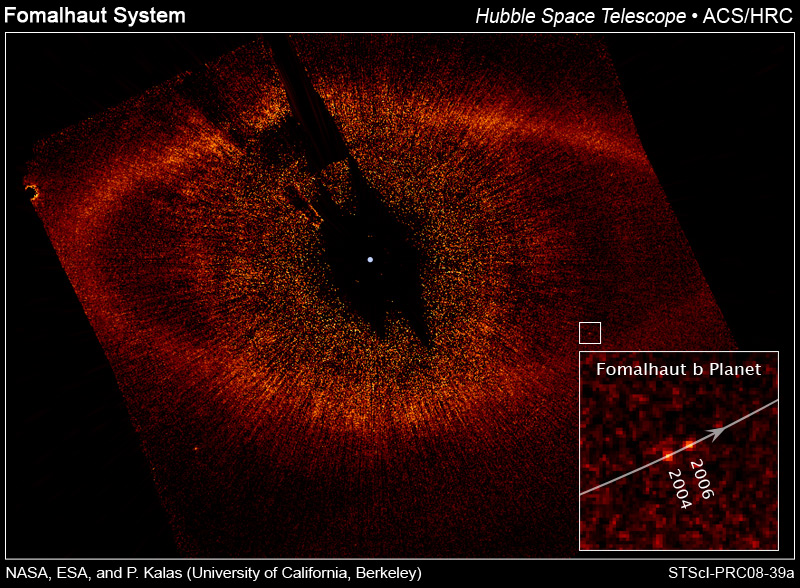 Today marks a great stride in how we see exoplanets, which have always remained as figments of our imagination and speculations. Where previous techniques only enable us to infer their existence by way of statistics, light curves, graphs and spectra, the big news today shows us direct images of extrasolar worlds.
Today marks a great stride in how we see exoplanets, which have always remained as figments of our imagination and speculations. Where previous techniques only enable us to infer their existence by way of statistics, light curves, graphs and spectra, the big news today shows us direct images of extrasolar worlds.While most exoplanets detected to date have been discovered using techniques such as Astrometry, Radial Velocity, Transit Method or Gravitational Microlensing, none would ever cause so much news coverage and impact as a "photograph" of another world. (Twitter went down shortly after the announcement, perhaps due to too many tweets about it). Although a huge bulk of future exoplanet discoveries would continue to be discovered by indirect techniques of planet detection, the method of Direct Imaging will pick up in the coming years, and soon we will finally see a photo of extrasolar continents.
The promise of the next generation of telescopes such as the Terrestrial Planet Finder (TPF), James Webb Telescope, Spitzer Telescope, New Worlds Mission, Kepler, and Space Interferometry Mission (SIM), will be bring even more amazing imagery. But hats off to good 'ol Hubble, who continues to bring us stunning pictures, in this case a snapshot of Fomalhaut b.
Artists will continue to bring us closer to these alien worlds, while computer simulations will always provide new insights, but imagination always will be our mind's eye.
Just imagine what goes on inside the mind of a child as you stand together gazing up in the night sky, and you point to a star and say, "that star over there has a planet, yeah that one right there..."
It's amazing, NOW we can finally say it with absolute certainty, just like that.
Just like that.

Other Links:
NASA/ESA Hubble
Physorg
Discovery Channel
Cosmic Ray
More on FomalHaut b
